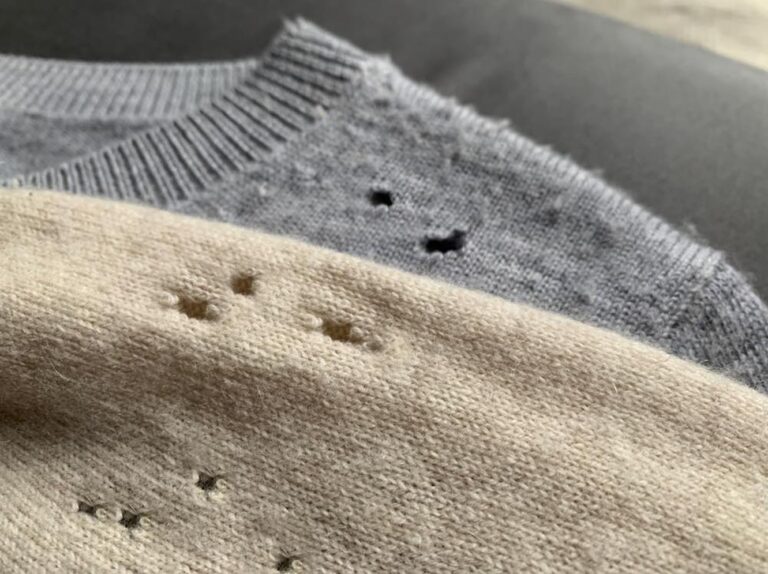Carpet moths are a familiar foe for UK homeowners, often spotted lurking in dark corners of carpets and rugs. But a question that catches many off guard is: Do carpet moths eat clothes? The answer is a resounding yes—these pests don’t limit their appetite to floor coverings. Their larvae can devastate wardrobes, chewing through wool jumpers, silk scarves, and more. ThermoPest, a UK pest control expert, offers heat treatment to stop them dead—learn how at our heat treatment page.
In this wardrobe warning for UK residents, we’ll explore do carpet moths eat clothes?, why they target your garments, and how to protect your closet. With ThermoPest’s help, you can banish these fabric-munchers for good. For more moth basics, visit our moth information page. Let’s dive into the details.

What Are Carpet Moths?
Carpet moths—chiefly the common clothes moth (Tineola bisselliella) and case-bearing clothes moth (Tinea pellionella)—are small insects with a big appetite for natural fibres. While adults don’t eat, their larvae feed on keratin, a protein found in wool, silk, feathers, and even hair. In the UK, where wool carpets and cosy knits are staples, these pests thrive. Do carpet moths eat clothes? Absolutely—the name “carpet moth” is a bit misleading, as they’re just as happy raiding your wardrobe. For a scientific take, check Wikipedia’s clothes moth entry.
Do Carpet Moths Eat Clothes? The Evidence
So, do carpet moths eat clothes? Yes, and the proof is in the holes. If you’ve found mysterious gaps in your favourite jumper or silk blouse, carpet moth larvae are likely culprits. These grubs—cream-coloured, 5-10mm long—don’t discriminate between a wool rug and a cashmere cardigan. They’ll chew through anything with keratin, leaving irregular holes, frayed edges, or silky webbing behind. In UK homes, where wardrobes often hold natural fabrics, this makes them a double threat—carpets and clothes alike are at risk. ThermoPest’s heat treatment zaps them fast—contact us to save your wardrobe.
Why Carpet Moths Target Clothes
Why do carpet moths eat clothes specifically? It’s all about their diet. Larvae need keratin to grow, and your wardrobe—packed with wool, silk, or even cotton blends with animal fibres—is a buffet. Dark, undisturbed closets mimic the quiet corners they love in carpets, making them prime egg-laying spots. Add the UK’s damp climate, which softens fibres and speeds larval development, and you’ve got a recipe for wardrobe woes. A BBC News piece on household pests highlights how moths exploit these conditions, turning closets into feeding grounds.
The Damage Beyond Clothes
While do carpet moths eat clothes? is a yes, their hunger doesn’t stop there. Beyond wardrobes, they hit rugs, curtains, upholstery—even stored blankets or pet bedding if it’s natural fibre. In older UK homes with vintage textiles, the damage can rack up fast. A small hole in a jumper might escalate to a shredded rug, costing hundreds in repairs or replacements. Their rapid lifecycle—eggs hatching in 4-10 days, larvae feeding for months—means unchecked infestations spread quickly. ThermoPest’s heat treatment stops this cycle—see how at our treatment page.
Signs Carpet Moths Are in Your Wardrobe
Spotting do carpet moths eat clothes starts with knowing the signs:
- Holes: Small, irregular gaps in wool, silk, or blended fabrics.
- Webbing: Fine, silky threads on clothes or in wardrobe corners.
- Larvae: Tiny cream grubs hiding in folds or seams.
- Adult Moths: Small (6-8mm wingspan), golden or grey, fluttering out when disturbed.
- Frass: Sand-like droppings near affected items.
If you see these, your wardrobe’s under attack. Our moth information page has more on spotting them.
Why DIY Fixes Won’t Cut It
UK residents might try DIY—vacuuming clothes, freezing items, or using lavender—to answer do carpet moths eat clothes with a home remedy. These help but don’t fully kill eggs or hidden larvae. Vacuuming misses deep seams, freezing only works for small batches, and repellents like cedar deter adults without tackling the root. The wardrobe remains at risk. ThermoPest’s heat treatment, hitting over 55°C, wipes out all stages in one go—chemical-free and wardrobe-safe.
ThermoPest’s Heat Treatment: Your Wardrobe’s Saviour
When do carpet moths eat clothes becomes a yes in your home, ThermoPest steps in. Our heat treatment heats infested areas—wardrobes included—to over 55°C, killing moths, larvae, and eggs instantly. It’s eco-friendly, leaves no residue, and protects your clothes without chemicals. Perfect for UK homes with damp closets and woollens, it’s a one-session fix. Curious? Visit our heat treatment page. Need it now? Contact us.
Protecting Your Wardrobe: Prevention Tips
After treatment, keep clothes safe:
- Vacuum wardrobes regularly, though it won’t kill eggs.
- Store woollens in airtight bags with lavender—deters adults.
- Use dehumidifiers to dry out damp UK closets.
- Check clothes seasonally for early signs.
ThermoPest offers tailored tips—see our moth page.
The Cost of Ignoring Carpet Moths
Ignoring do carpet moths eat clothes can sting. A chewed jumper might be a minor loss, but widespread damage—to clothes, carpets, and beyond—adds up. In the UK, where natural fibres are prized, replacement costs soar. The BPCA’s pest advice warns of moths’ economic impact, urging swift action. ThermoPest’s heat treatment prevents this—contact us to act fast.
Final Thoughts on Do Carpet Moths Eat Clothes?
So, do carpet moths eat clothes? Yes—they’re a wardrobe menace for UK residents, targeting wool, silk, and more with ruthless efficiency. From holes in your favourite knit to damage across your home, their threat is real. ThermoPest’s heat treatment offers a chemical-free, effective fix—explore it at our treatment page, learn more at our moth page, or contact us. Don’t let moths ruin your wardrobe—fight back today.
